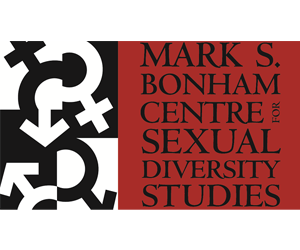Difference between revisions of "LGBTQ Curators at Museums and Art Galleries"
| Line 22: | Line 22: | ||
* [[Neil MacGregor]], Great Britain, British Museum | * [[Neil MacGregor]], Great Britain, British Museum | ||
* [[Fernand Legros]], France, dealer | * [[Fernand Legros]], France, dealer | ||
| − | * [[Thierry-Maxim Loriot]], Canada, Montreal Museum of Fine | + | * [[Thierry-Maxim Loriot]], Canada, Montreal Museum of Fine Arts |
* [[Mathew Marks]], United States, Gallery Owner and curator | * [[Mathew Marks]], United States, Gallery Owner and curator | ||
* [[Marc Mayer]], Canada, National Gallery of Canada | * [[Marc Mayer]], Canada, National Gallery of Canada | ||
| Line 32: | Line 32: | ||
* [[Ann Philbin]], United States, Hammer Museum | * [[Ann Philbin]], United States, Hammer Museum | ||
* [[Mark Robbins]], United States, Wexner Center for the Arts | * [[Mark Robbins]], United States, Wexner Center for the Arts | ||
| + | * [[Rajendra Roy]], United States, Museum of Modern Art (MOMA) | ||
* [[Augustin Perez Rubio]], Spain, MALBA-Fondacion Constantini | * [[Augustin Perez Rubio]], Spain, MALBA-Fondacion Constantini | ||
* [[Carlos Urroz]], Spain, ARCOmadrid | * [[Carlos Urroz]], Spain, ARCOmadrid | ||
Revision as of 14:54, 20 December 2015
There are several successful LGBTQ art and museum curators at prominent cultural institutions and art galleries around the world. In essence, a curator is a keeper or guardian of important cultural heritage pieces, including collectibles, historic objects, art pieces, or scientific pieces. They thus represent important links between the past and today’s contemporary world.
It is a curator’s responsibility to carefully assess the importance and relevance of pieces to the historic narrative of the subject matter. If relevant, they acquire the piece to add to a collection of similar pieces which collectively convey a specific story. Curators often are required to interpret the meaning of a specific piece in the context of a period of time, then catalogue it and prepare it for presentation to the public. To accomplish this requires a specialization in their field of study.
Given the historic context in which a curator works, you can see the relevance of having LGBTQ representation in this professional field. It is important that curators maintain a position of academic standing that puts them above bias and censorship in their work of revealing the true historical narrative to the public.
We have identified several LGBTQ individuals who are, or have been, prominent curators around the world:
- Klaus Biesenbach, United States, Museum of Modern Art and D.S.1 Contemporary Art Center
- Andrew Bolton, United States, Metropolitan Museum of Art
- Erica Brausen, Germany, Hanover Gallery
- Chandler Burr, United States, Museum of Art & Design
- Christopher Chippindale, Great Britain, Museum of Archeology and Anthropology
- Tania De Rozario, Singapore, Etiquette
- J. B. Harter, United States, Historic New Orleans Collections
- Charles C. Hill, Canada, National Gallery of Canada
- Frank Howarth, Australia, Australia Museum
- Jonathan David Katz, United States, National Gallery
- Paweł Leszkowicz, Poland
- Neil MacGregor, Great Britain, British Museum
- Fernand Legros, France, dealer
- Thierry-Maxim Loriot, Canada, Montreal Museum of Fine Arts
- Mathew Marks, United States, Gallery Owner and curator
- Marc Mayer, Canada, National Gallery of Canada
- Margaret Mead, United States, American Museum of Natural History
- Tobias Meyer, Great Britain, Sothebys
- Timothy Naftali, Canada, Richard Nixon Presidential Library and Museum
- Rex Nan Kivell, New Zealand, Redfern Gallery
- Frank O'Hara, United States, Museum of Modern Art
- Ann Philbin, United States, Hammer Museum
- Mark Robbins, United States, Wexner Center for the Arts
- Rajendra Roy, United States, Museum of Modern Art (MOMA)
- Augustin Perez Rubio, Spain, MALBA-Fondacion Constantini
- Carlos Urroz, Spain, ARCOmadrid
- Charlotte Von Mahlsdorf, Germany, Grunderzeit Museum
- Monroe Wheeler, United States, Museum of Modern Art

